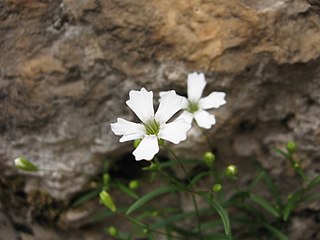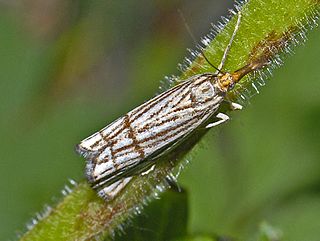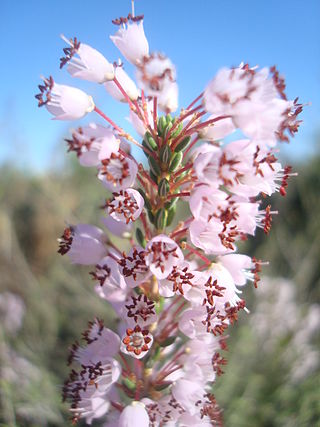
The Balkans, also known as the Balkan Peninsula, is a geographical area in southeastern Europe with various geographical and historical definitions. The region takes its name from the Balkan Mountains that stretch throughout the whole of Bulgaria. The Balkan Peninsula is bordered by the Adriatic Sea in the northwest, the Ionian Sea in the southwest, the Aegean Sea in the south, the Turkish straits in the east, and the Black Sea in the northeast. The northern border of the peninsula is variously defined. The highest point of the Balkans is Musala, 2,925 metres (9,596 ft), in the Rila mountain range, Bulgaria.

Southern Europe is the southern region of Europe. It is also known as Mediterranean Europe, as its geography is marked by the Mediterranean Sea. Definitions of Southern Europe include some or all of these countries and regions: Albania, Andorra, Bosnia and Herzegovina, Bulgaria, Croatia, Cyprus, Turkey, Gibraltar, Greece, Italy, Kosovo, Malta, Monaco, Montenegro, North Macedonia, Portugal, San Marino, Serbia, Slovenia, Southern France, Spain, and Vatican City.

Europe, the westernmost portion of Eurasia, is often divided into regions and subregions based on geographical, cultural or historical factors. Since there is no universal agreement on Europe's regional composition, the placement of individual countries may vary based on criteria being used. For instance, the Balkans is a distinct geographic region within Europe but individual countries may alternatively be grouped into Southern Europe, Southeastern Europe, or less commonly East Central Europe.
Southeast Europe or Southeastern Europe (SEE) is a geographical subregion of Europe, consisting primarily of the Balkans, as well as adjacent regions and archipelagos. Sovereign states and territories that are included in the region are Albania, Bosnia and Herzegovina, Bulgaria, Croatia, Cyprus, Greece, Kosovo, Montenegro, North Macedonia, Romania, Serbia, and the European part of Turkey. Sometimes, Moldova and Slovenia are also included. The largest cities of the region are Istanbul, Athens, Bucharest, Sofia, and Belgrade.

Amaurobius is a genus of tangled nest spiders that was first described by Carl Ludwig Koch in 1837.

The Mediterranean killifish, Mediterranean banded killifish or South European toothcarp is a species of fish in the family Cyprinodontidae. It is found in Albania, Algeria, Bosnia and Herzegovina, Croatia, Cyprus, Egypt, France, Greece, Israel, Italy, Lebanon, Libya, Malta, Morocco, Montenegro, Slovenia, Syria, Tunisia, and Turkey. Its natural habitats are saline lakes, saline marshes, and coastal saline lagoons.

Adriatic–Ionian motorway or Trieste-Kalamata Highway or the Blue Corridor, is a future motorway that will stretch along the entire eastern shore of the Adriatic and Ionian seas, spanning the western coast of the Balkan peninsula from Italy in the north through Slovenia, Croatia, Montenegro, Albania to Greece in the south.
The western broad-toothed field mouse is a species of rodent in the genus Apodemus from southeastern Europe. It is related to A. mystacinus, which occurs further to the east. It is found in Albania, Bosnia and Herzegovina, Bulgaria, Croatia, Greece, Kosovo, Montenegro, North Macedonia and Serbia.
This article lists all the Bosnia and Herzegovina national football team results between 1995 and 2019.

Heliosperma is a genus of flowering plants in the family Caryophyllaceae. As such, it is closely related to the large genus Silene, but its members can be told apart from Silene by the crest of long papillae on the seeds. The majority of the species are narrow endemics from the Balkan Peninsula, but H. alpestre is endemic to the Eastern Alps, and H. pusillum is found from the Cordillera Cantábrica in northern Spain to the Carpathians. Like members of the genus Silene and other related genera, Heliosperma is attacked by species of the anther smut fungus Microbotryum. Cases of parallel divergence events between alpine and mountain populations have been reported in this genus.

Chrysocrambus linetella is a species of moth in the family Crambidae.

Montenegrin nationalism is the nationalism that asserts that Montenegrins are a nation and promotes the cultural unity of Montenegrins.

Histopona is a genus of funnel weavers first described as a sub-genus of Hadites by Tamerlan Thorell in 1870. It was elevated to genus by Brignoli in 1972.

Aricia anteros, the blue argus, is a European butterfly in the family Lycaenidae. It has a wingspan of 30–34 mm. In Europe it can be found in Macedonia, Albania, Greece, Bulgaria, Serbia, Croatia, Montenegro, Bosnia and Herzegovina, Romania, Ukraine and in Turkey. Its primary larval food plants are Geranium sanguineum and Geranium macrorrhizum.
The 2019 FIBA Basketball World Cupqualification for the FIBA Europe region, began in August 2017 and concluded in February 2019. Contrary to previous years, no teams were automatically placed into the World Cup, so all FIBA Europe nations had to participate in qualification.
This page describes the qualification procedure for EuroBasket Women 2019.
This page describes the qualification procedure for EuroBasket Women 2023. 14 teams joined the co-hosts Israel and Slovenia.

Erica manipuliflora is a plant belonging to the genus Erica. The plant is native to Albania, Bosnia and Herzegovina, Croatia, Cyprus, East Thrace, Greece, Italy, Lebanon, Montenegro, North Macedonia, Serbia, Slovenia, Turkey and Syria.

This is a list of the Croatia national under-21 football team results from 2000 to 2009.













